
Gazetted as a National Park in 1966, Meru is located almost exactly in the middle of Kenya. It is wild, remote, rugged and completely un-spoilt. At 870 sqkm, it is a large park which plays host to a variety of vegetation types, from thorny bush and wooded grasslands to rocky outcrops and dense riverine forests of doum and raffia palms. It has that sense of an authentic African reserve, full of culture, history and beauty. Thirteen streams meander through the harsh landscape, all flowing into the Tana River, the southern boundary of the park and one of Africa’s great rivers.


The park was made famous in the 1960s by George and Joy Adamson, who reintroduced their beloved lioness Elsa into the wild. George was on a walk in the region when he was charged by a lioness. He shot the lioness in defence, only to discover to his horror that the reason she had ‘attacked’ him was because she was protecting a set of three newborn cubs. George and his wife decided to intervene — two of these cubs, Big One and Lusticia, were sent off to a zoo in the Netherlands, whilst the third cub, Elsa, remained behind and was hand-reared. The Adamson’s wrote a book about their experience which was subsequently made into the feature film Born Free starring Virginia McKenna and Bill Travers — a ground-breaking movie; the first to depict wild animals as endearing creatures, whose plight the audience could sympathise with.

Whilst in Meru, we stayed at Elsa’s Kopje. The lodge is built around a granite hill, each cottage individually designed to take advantage of the views and natural curves, rocks and trees on the hillside. Unashamedly romantic and beautifully styled, Elsa’s Kopje is set just above the site of George Adamson’s original camp and memorabilia and imagery of their legacy can be found dotted throughout the property: botanical drawings done by Joy, diary entries and sketches, and photographs of this maverick couple and ‘their’ lions are found on all the walls. Their energy and spirit is ever-present.
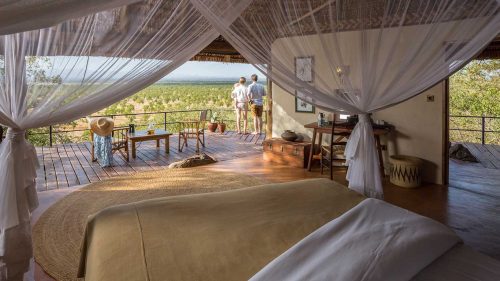
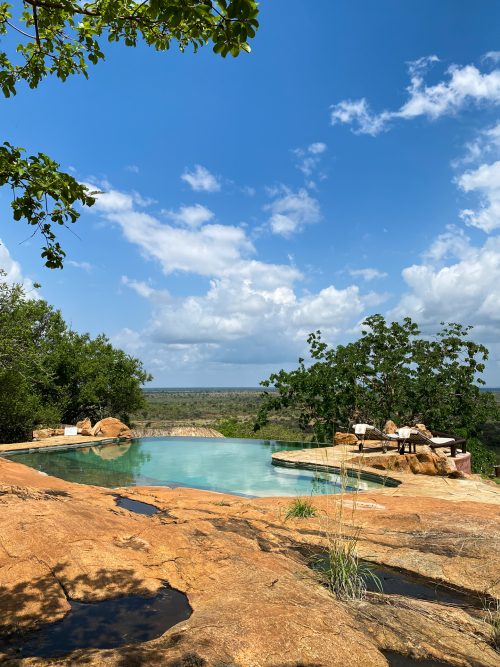
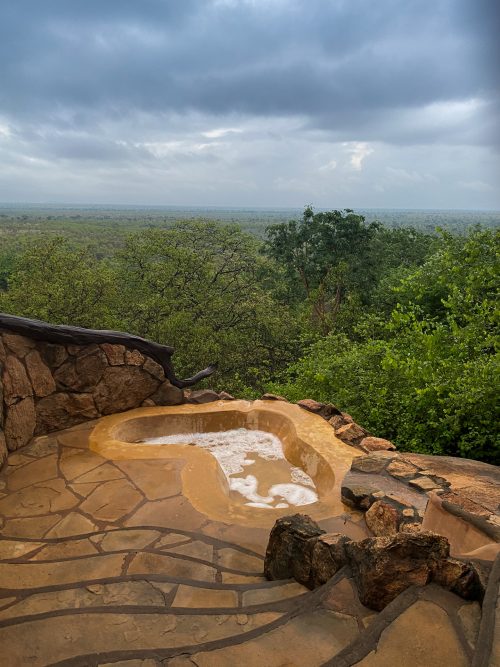
The history of the park is clouded by a period of darkness in the late 1980s when nearly all the animals were poached. At one stage, the government contemplated de-gazetting it as a national park but what a huge loss that would have been. Fortunately, opinions changed and the decision was made to push on; donors were found and money was poured into roads and anti-poaching efforts. Currently, this lodge is the only accommodation option available within the entire park. Look west and you’ll see the pointed peaks of Mount Kenya, look east and gaze across Meru and into one of the biggest tracts of wilderness left in Africa. Between 2 000 and 2 005 animals of all species were brought in from across Kenya in a mammoth conservation effort that ultimately saw Meru restored from near ruin to one of the most promising parks in East Africa.
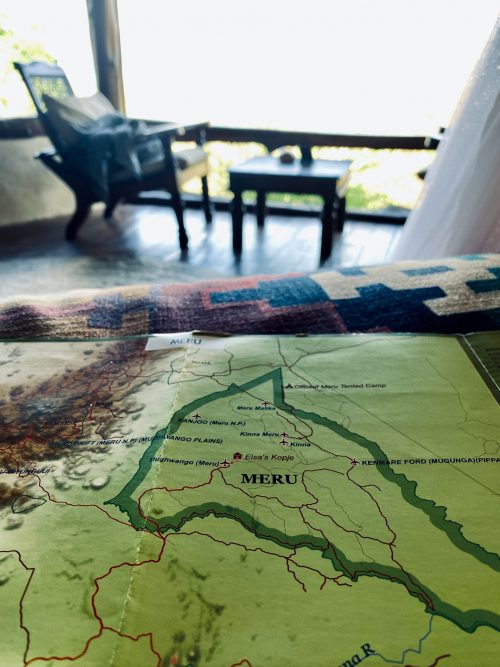
Although the Adamson’s marriage ultimately failed, their commitment and support of lion conservation never wavered. Elsa ultimately died in 1961 due to a form of babesiosis, a tick-borne blood disease. Elsa was buried in Meru along the banks of the Tana River and many people still visit her grave to this day. At the time of her death, there were increasing issues between her, her pride and some of the local people and so the decision was made to relocate Elsa’s then-mature cubs to a remote part of the Serengeti National Park. Apparently, George managed to find one of the cubs a few months later in the Serengeti, together with some ‘wild’ lions, but they moved off into the wilderness and were never seen again. I find it exciting that there is a chance — a very slim chance — that perhaps some of the lions we see in the Mara may be distant relatives and descendants of the famous Elsa.

Our trip to Meru was very special. During the four days we had the park to ourselves without another vehicle in sight. We saw an impressive pride of lions and marvelled at the abundant birdlife. The reticulated giraffe are gorgeous and I was left amazed at the size of some of the buffalo herds. There is also a fenced-in rhino sanctuary, a safe haven to both black and white rhino. Although it can’t compete with the Mara in terms of numbers of animals, it certainly holds its own in terms of a remarkable wilderness experience and should be considered by true safari enthusiasts.
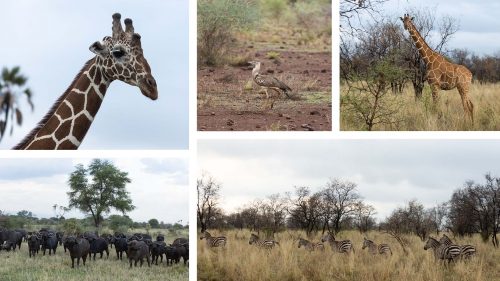
Our trip coincided with the onset of the first rains, and we watched each day as the brown landscape was transformed, before our eyes, into a lush verdant green. For me the highlight, however, was doing a full-day drive down to the Tana River, seeing the old basket-cableway bridge that the Adamson’s used to cross the raging torrent, and then entering the neighbouring sister-park of Kora.
Kora is a massive ‘forgotten park’ where the Kenyan Wildlife Services, together with Tony Fitzjohn (George Adamson’s old assistant and author of the book Born Wild), have decided to initiate a long-term rehabilitation programme to not only hold the line on conservation, but reverse years of damage from poor land management and livestock encroachment.
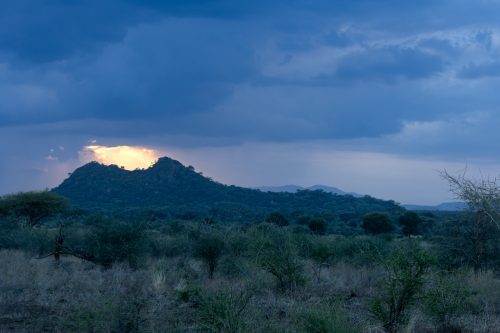
The diversity within Kenya is extraordinary, as are the efforts to maintain and protect a noble amount of wilderness. Meru is a perfect example of how ecotourism plays such a crucial role in the protection of Africa.
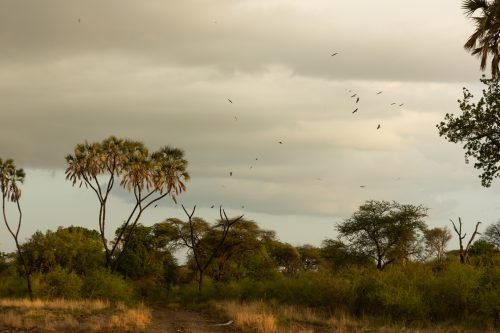
On 3 January 1980, Joy Adamson was shot and killed in a dispute with a member of her staff. She was buried on the same site as her beloved lioness Elsa, in Meru National Park. George Adamson was shot and killed by Somali bandits nine years later when he went to the rescue of his assistant. He was 83 years old. His body was buried on the other side of the Tana River, near Kami-ya-Simba, his home in Kora National Park, next to his brother Terrance, and two lions named Super Cub and Mugie.
Filed under: East Africa Travel
Subscribe for Weekly Stories
Comments (0):
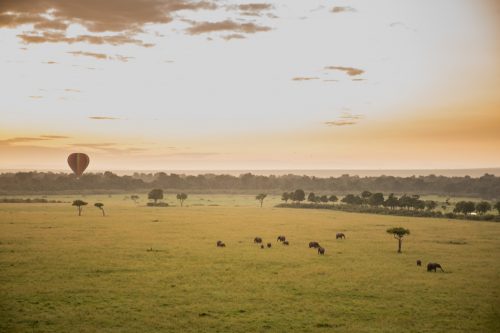
Hot-air Ballooning